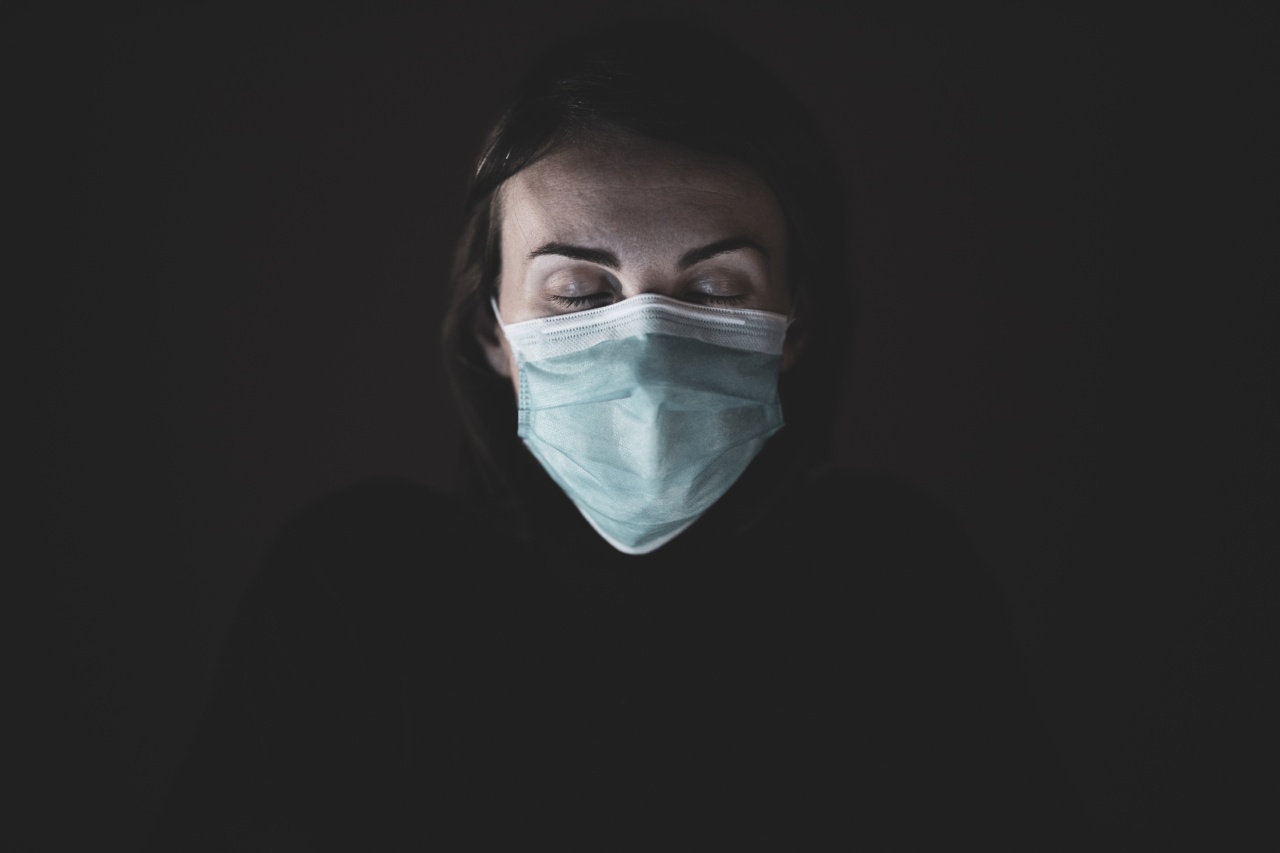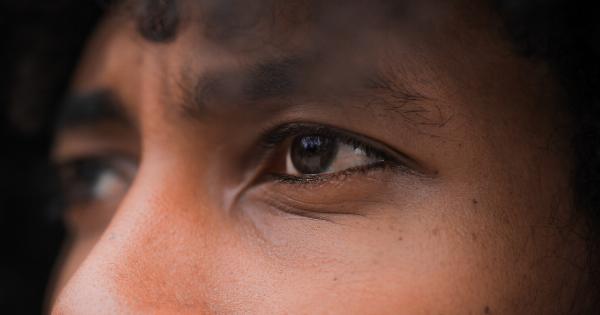Eye diseases can affect anyone regardless of their age, gender, or race. With the advent of technology and the constant use of digital devices, eye problems have become even more prevalent today.
It is essential to educate people about the most common eye diseases, their symptoms, and preventive measures. In this article, we will discuss 30 of the most common eye diseases and their prevention methods.
1. Myopia (Nearsightedness)
Myopia is a condition in which a person can see nearby objects clearly, but distant objects appear blurry. This occurs when the eyeball is too long or the cornea is too curved.
Genetics is the primary factor that causes myopia, but excessive screen time and reading can also contribute to the condition. To prevent myopia, regular eye checkups, limiting screen time, reducing reading intensity, and spending more time outdoors can help.
2. Hyperopia (Farsightedness)
Hyperopia is a condition in which a person can see distant objects clearly, but nearby objects appear blurry. It is caused when the eyeball is too short or the cornea is too flat. This condition can also be genetic.
To prevent hyperopia, regular eye checkups and wearing appropriate corrective lenses or glasses can help.
3. Astigmatism
Astigmatism is an irregularly shaped cornea that blurs the vision at all distances. This can cause headaches, eyestrain, and blurred vision. The condition is mostly genetic, and there are no known preventive measures.
The use of appropriate corrective lenses or glasses can help manage astigmatism.
4. Presbyopia
Presbyopia is a condition that affects older adults, leading to the inability to focus on nearby objects. It is caused by the gradual loss of elasticity in the eye’s lens over time.
Regular eye checkups, using appropriate corrective lenses or glasses, and performing eye exercises can help prevent presbyopia.
5. Cataracts
Cataracts are a very common eye disease that affects older adults. They occur when the proteins in the lens start to clump together, leading to cloudiness and blurred vision.
Regular eye checkups, eating a healthy diet, and wearing sunglasses to protect the eyes from the sun’s ultraviolet rays are effective preventive measures against cataracts. Surgery is the only solution to cure the condition.
6. Age-related Macular Degeneration (AMD)
AMD is a condition that affects older adults and damages the macula, leading to vision loss. It can be dry or wet, with wet being more severe. The exact cause of the disease is unknown, but smoking, genetics, and a poor diet can contribute to it.
Eating a healthy diet rich in vitamins A, C, and E, and regular exercise are essential preventive measures against AMD.
7. Glaucoma
Glaucoma is a condition in which the optic nerve is damaged, leading to vision loss and blindness. The two main types of glaucoma are open-angle glaucoma and closed-angle glaucoma.
The exact cause of the disease is unknown, but high eye pressure, genetics, and age are contributing factors. Regular eye checkups, avoiding smoking, and eating a healthy diet can help prevent glaucoma.
8. Conjunctivitis (Pink Eye)
Conjunctivitis is an eye condition that causes the conjunctiva (the thin membrane that covers the white part of the eye) to become inflamed, leading to redness, itching, and discharge. It can be caused by bacteria, viruses, allergies, or irritants.
To prevent conjunctivitis, washing hands regularly, avoiding touching the eyes with dirty hands, and avoiding sharing personal items, such as towels or pillows, can help.
9. Dry Eye Syndrome
Dry eye syndrome occurs when the eyes do not produce enough tears or produce poor quality tears, leading to dryness, redness, and irritation. It can be caused by aging, certain medications, or underlying medical conditions.
To prevent dry eye syndrome, avoiding smoking, using humidifiers, and taking breaks from screen time can help.
10. Optic Neuritis
Optic neuritis is a condition in which the optic nerve becomes inflamed, leading to vision loss and eye pain. It can be caused by multiple sclerosis or other underlying medical conditions.
Proper treatment of the underlying condition, regular eye checkups, and wearing protective eyewear can help prevent optic neuritis.
11. Retinal Detachment
Retinal detachment occurs when the retina detaches from its underlying tissue, leading to vision loss. It can be caused by injury, diabetes, or underlying medical conditions.
To prevent retinal detachment, regular eye checkups and avoiding injury to the eyes can help.
12. Uveitis
Uveitis is an inflammation of the uvea, the middle layer of the eye. It can be caused by underlying medical conditions, infections, or injuries to the eyes.
Proper treatment of the underlying condition, avoiding eye injuries, and regular eye checkups can help prevent uveitis.
13. Blepharitis
Blepharitis is an inflammation of the eyelids, leading to redness, itching, and swelling. It can be caused by bacterial infection or underlying medical conditions.
To prevent blepharitis, proper hygiene practices, such as washing hands and avoiding touching the eyes with dirty hands, can help.
14. Trachoma
Trachoma is an eye infection caused by the bacterium Chlamydia trachomatis. It leads to scarring of the eyelids, which can cause blindness.
It is common in developing countries, but its spread can be prevented by practicing proper hygiene, such as using clean water and soap.
15. Corneal Ulcers
Corneal ulcers are open sores on the cornea, leading to redness, severe pain, and vision loss. They can be caused by bacterial or viral infections, certain medications, or underlying medical conditions.
Proper all-up of contact lenses, avoiding eye injuries, and regular eye checkups can help prevent corneal ulcers.
16. Keratitis
Keratitis is an inflammation of the cornea, which can be caused by bacteria, viruses, or fungi. It leads to redness, eye pain, and vision loss. Proper all-up of contact lenses, avoiding eye injuries, and regular eye checkups can help prevent keratitis.
17. Meibomian Gland Dysfunction
Meibomian gland dysfunction is a condition that affects the meibomian glands in the eyelids, leading to dryness and inflammation in the eyes. It can be caused by aging, underlying medical conditions, or certain medications.
Proper hygiene practices and avoiding eye injuries can help prevent meibomian gland dysfunction.
18. Pinguecula
Pinguecula is a yellowish growth on the conjunctiva, often caused by sun exposure. It leads to redness, swelling, and dryness in the eyes. Wearing sunglasses and avoiding prolonged exposure to bright sunlight can help prevent pinguecula.
19. Pterygium
Pterygium is a growth of the conjunctiva that extends over the cornea, leading to vision loss. It is caused by prolonged exposure to bright sunlight, wind, and dust.
Wearing sunglasses and avoiding exposure to bright sunlight and other irritants can help prevent pterygium.
20. Diabetic Retinopathy
Diabetic retinopathy is a condition that affects people with diabetes, causing damage to the blood vessels in the retina, leading to vision loss.
Proper management of diabetes, regular eye checkups, and a healthy diet can help prevent diabetic retinopathy.
21. Nystagmus
Nystagmus is a condition in which the eyes make repetitive, uncontrolled movements, leading to vision loss. It can be caused by neurological disorders, genetic conditions, or drug side effects.
Proper treatment of the underlying condition and wearing corrective lenses can help prevent nystagmus.
22. Strabismus
Strabismus is a condition in which the eyes do not align properly, leading to vision loss. It can be caused by neurological disorders, genetic conditions, or drug side effects.
Proper treatment of the underlying condition and wearing corrective lenses can help prevent strabismus.
23. Amblyopia (Lazy Eye)
Amblyopia is a condition in which the brain and eyes do not work together correctly, leading to vision loss. It is common in children and can be caused by strabismus, blurred vision, or cataracts.
Proper treatment, such as occlusion therapy, and regular eye checkups can help prevent amblyopia.
24. Night Blindness
Night blindness is a condition in which a person cannot see in low light conditions. It can be caused by underlying medical conditions or nutritional deficiencies.
Eating a healthy diet rich in vitamin A, getting regular eye checkups, and wearing appropriate corrective lenses can help prevent night blindness.
25. Colour Blindness
Colour blindness is a condition that affects people’s ability to see colours correctly. It can be caused by genetic factors or underlying medical conditions. There are no known preventive measures for colour blindness.
26. Hemianopsia
Hemianopsia is a condition in which the vision is lost in half of the visual field in one or both eyes. It can be caused by neurological disorders, head injuries, or strokes.
Proper management of the underlying condition, regular eye checkups, and wearing corrective lenses can help prevent hemianopsia.
27. Charles Bonnet Syndrome
Charles Bonnet Syndrome is a condition that causes vision hallucinations in people with vision loss. It can be caused by macular degeneration, cataracts, or glaucoma. There are no known preventive measures for Charles Bonnet Syndrome.
28. Refractive Error
Refractive error is a condition that affects a person’s ability to see clearly, leading to blurred vision. It can be caused by myopia, hyperopia, or astigmatism.
Regular eye checkups and appropriate corrective lenses can help prevent refractive errors.
29. Eyelid Tumors
Eyelid tumors are growths on the eyelids, which can be benign or malignant. They can be caused by exposure to sunlight, genetics, or underlying medical conditions. Wearing sunglasses and avoidance of sun exposure can help prevent eyelid tumors.
30. Eyelid Infections
Eyelid infections are infections that affect the eyelids, leading to redness, swelling, and discharge. They can be caused by bacteria, viruses, or irritants.
To prevent eyelid infections, proper hygiene practices, such as washing hands and avoiding sharing personal items, can help.
Conclusion
There are many eye diseases, and their causes vary. Some are genetic, while others are caused by underlying medical conditions, infections, or irritants.
Regular eye checkups, healthy lifestyle practices, and appropriate corrective lenses can help prevent most eye diseases. It is crucial to educate people about common eye diseases, their symptoms, and preventive measures.




























